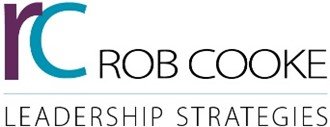
Rethinking the Fundamentals of Executive Leadership
It might be the state of the economy or just the turbulent times we live in, but it seems that the dramatic pace of change is constantly eroding the impact of many traditional management practices. What traditional organizational solutions am I talking about? I mean the way we’ve tried to improve business over the last 25 years. Whether it’s the tired annual performance review or redundant strategic plans – we’ve held on to these things because they’re familiar. We are used to doing them even though we know they yield lackluster results we often ignore. While we would like to believe otherwise, what we have learned is that there are no ‘silver bullets’.
The need for executives to develop new ways of leading in an environment of rapidly changing conditions is essential. In order for that to happen it’s time to take stock of the practices we’ve been doing for so long and get real with what they offer us. The practices I encourage us to rethink are: the strategic plan in its concept and execution, the annual review, and leadership and team development.
1. The Strategic Plan
The first practice I ask us to reconsider is the strategic planning process. Leaders, often assisted by consultants, have been creating strategic plans for decades, and with every year that goes by they seem to further lose their relevance. This could be because of increasing business volatility and uncertainty. Organization leaders used to develop 20-year strategic plans, then 10, then 5 and now it’s about next year.
Do leadership teams create strategic plans for their own amusement? One might think so, because so many are written and then never effectively implemented – and in some cases never looked at again. In my 30 years of working with leadership teams I’ve seen this happen again and again.
I think the strategic plan needs to be rescued. The value of a strategic plan is to provide clear direction to the organization and a clear vision is an important component. I am not talking about the one-liner slogans we mistakenly classify as vision. These are ones that usually contain the phrases “best in the world”, “world class” or “number one”. A useful vision must paint a picture of the future in a way that engages and inspires people to change. An effective vision clarifies the fundamental purpose of the organization, why it exits and the unique value it provides to the world. It paints a picture of what the organization will look like in 3 to 5 years; what products, markets, resources, financial situation and reputation. It should also specify the behaviours and habits that are fundamental to success.
2. Strategic Plan Execution
Secondly, we need to look at how we execute our strategic plans. It makes sense that if your strategic plan is weak and uninspired, it won’t be acted upon – most aren’t. I have seen only a few organizations execute a strategic plan successfully. These companies fully engage their people in a dialogue of what they need to be doing differently if the vision is to be achieved and what they need in place if they are going to be successful.
Typically, I see companies doing things the other way around, spending money on designing a plan, only to sit on it. Organizations need to regard strategic planning as the beginning of a process for engaging and inspiring people to change, not some discreet annual event or documentation exercise.
To effectively enable execution, leaders need to understand their current state of readiness for change and clearly map out how the defined direction will be executed. They need to define clear and focused strategies, goals, priorities and actions for engaging the organization in achieving the desired future. This requires clear and consistent messaging by all of the members of the leadership team. Leaders also need to identify the few key things that need to get accomplished in the next few months if the organization is going to be on track to achieve the vision.
3. The Annual Review
One habit we really must rethink is the dreaded annual performance review. Most organizations continue to perpetuate this ritual despite pleas from staff. Most managers complain about the amount of time it takes to complete all of the forms and employees are typically upset with their feedback. Quality guru W. Edwards Deming blasted away at the annual performance review stating, “It nourishes short-term performance, annihilates long-term planning, builds fear, demolishes teamwork, and facilitates rivalry and politics.” Thankfully, organizations feel the same way because more and more organizations are abandoning the practice.
I have had a great deal of feedback from colleagues that in their organizations this is the only time that performance is formally reviewed and discussed with people and that if the practice was abandoned there would be no feedback. This is indeed a sorry state.
To turn this sorry state around, performance reviews and feedback need to be on-going informal processes. People need to be continually aware of performance expectations and how well they are doing. Leaders need to check-in and provide targeted, timely coaching and advice. If employees are not performing as required then it is because leaders have missed out on three things: clearly defined expectations, sufficient resources, and an inspirational environment where people are motivated to perform.
4. Leadership and Team Development
Another refuge of old-fashioned ideas resides in the way we develop both teams and leaders. A great deal of team development involves leadership teams leaving the workplace and participating in off-site games and events. The theory is that bonding that occurred during the kayaking trip, rope course or wall climbing challenge will make the team better back in the office. While these team activities can be great fun and a do help people get to know each other a lot better, they do not build sustainable teams. This occurs on-the-job when team members come together to deal with real issues and make tough decisions. Team development needs to be integrated into ongoing team deliberations, meetings and planning sessions where the team improves its performance on a continuous basis.
As with team development, a great deal of leadership development education happens off-the-job. Executives attend post-graduate university courses, specialized external programs designed for leaders, or internally delivered leadership development workshops. While the content of most of these programs is important (albeit generic), it is most often disconnected from the executives’ ‘real work’ and the specific context of the business. A few weeks after returning from an inspirational leadership session, most of the energy and insight is gone and things return to normal. The most effective leadership development occurs on–the-job and on a ‘just-in-time’ basis. Leaders need to learn and apply new theories, methods and processes in the context of their unique team and organizational realities. To be truly impactful, leadership development must be focused, flexible, and relevant. The principles explored may be common, but the conversations and applications must be unique.
About the Author: Rob Cooke is a leadership advisor, strategist and coach. Drawing on a strong background in business and organizational development, Rob utilizes his extensive consulting experience to help leaders address emerging challenges, seize opportunities and execute approaches to achieve personal, leadership and business goals.
June 17, 2017 | Leadership Development
